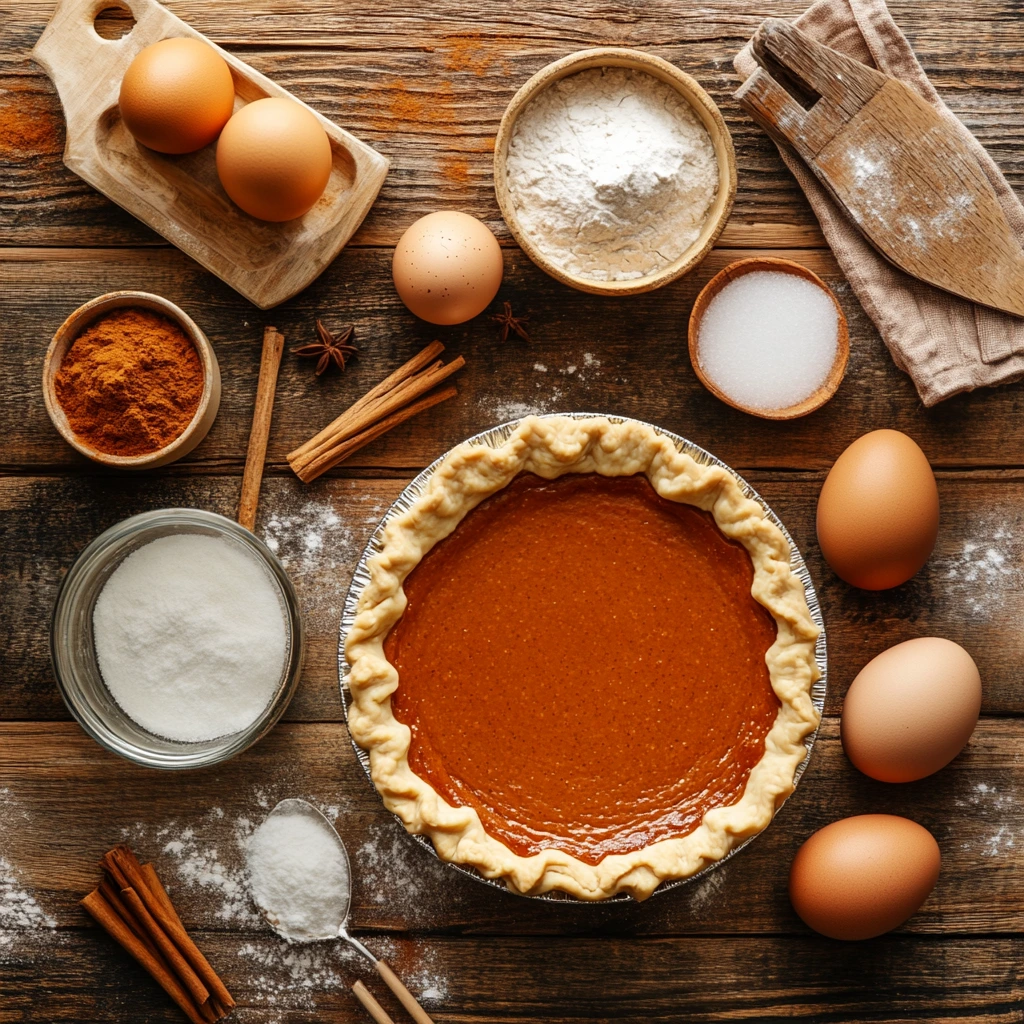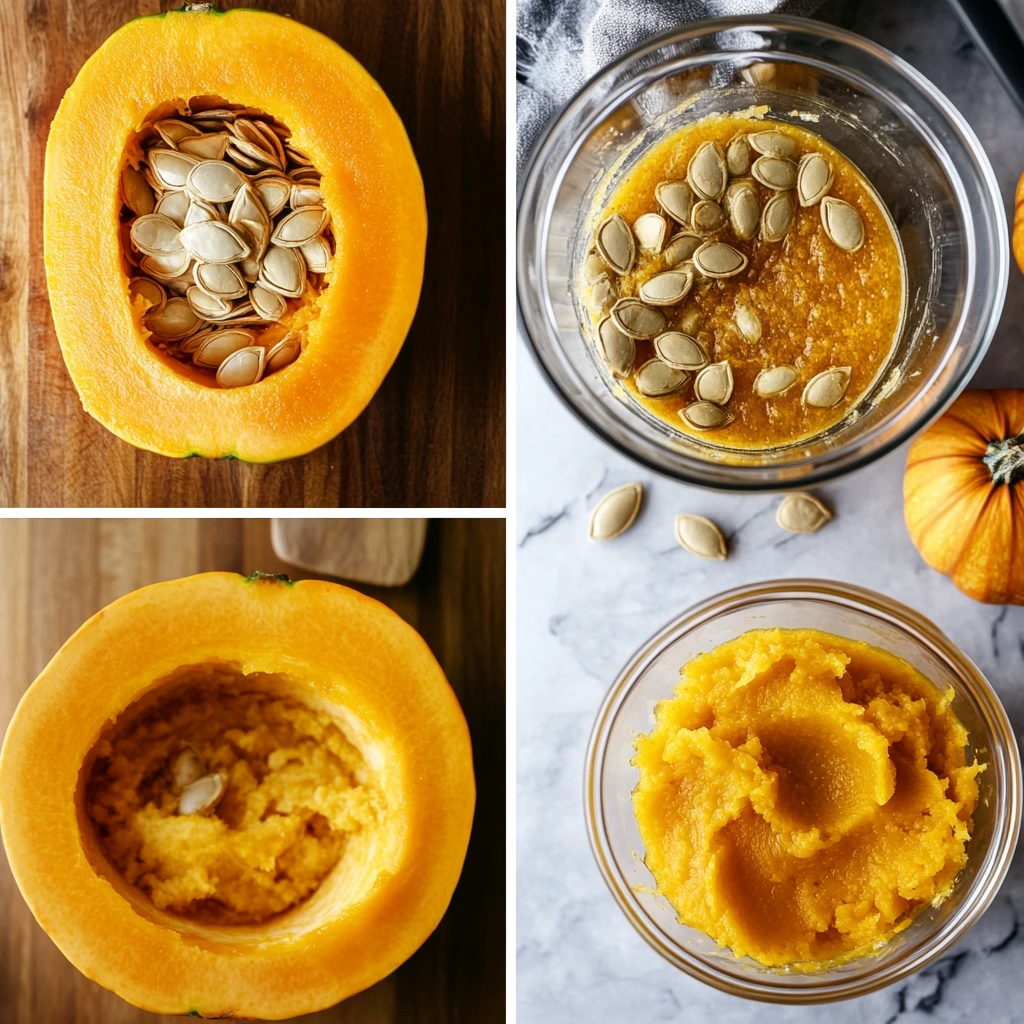When browsing the baking aisle, you may notice two seemingly similar products: canned pumpkin pie filling and canned pumpkin puree. At first glance, they might look interchangeable, but these two items serve very different purposes in cooking and baking. Understanding their differences is key to achieving the best results in your recipes.
Is Canned Pumpkin Pie Filling the Same as Puree?
Canned pumpkin pie filling is a pre-mixed blend of pumpkin puree, sugar, and spices like cinnamon, nutmeg, and ginger. It’s specifically designed for convenience, allowing you to skip the step of measuring and mixing spices when making desserts like pumpkin pie. On the other hand, canned pumpkin puree is a straightforward ingredient made from 100% cooked and mashed pumpkin. It contains no added sugars, spices, or flavorings, making it a versatile option for a wide range of recipes, from savory soups to baked goods.
Choosing the right product depends on your recipe and personal preferences. Using pumpkin pie filling instead of puree in certain dishes can result in overly sweet or spiced outcomes, while substituting puree for filling might leave your dessert bland or incomplete. In this guide, we’ll explore the key differences between the two, their uses, and how to make the best choice for your culinary creations. Whether you’re preparing a classic pie or experimenting with savory dishes, knowing when to use each product will elevate your cooking experience.
Table of Contents
1. What Is Canned Pumpkin Pie Filling?
Canned pumpkin pie filling is a pre-made mixture of pumpkin puree blended with sugar, spices, and flavorings, designed to simplify the preparation of desserts like pumpkin pie. It eliminates the need for measuring and mixing spices and sweeteners, making it a time-saving choice for bakers. The filling delivers a consistent, sweet, and spiced flavor, ideal for traditional pumpkin-based recipes.
1.Ingredients in Canned Pumpkin Pie Filling

Canned pumpkin pie filling typically contains:
- Pumpkin Puree: The primary ingredient, providing the base flavor and texture.
- Sugar: Adds sweetness, balancing the earthy flavor of the pumpkin.
- Spices: Includes a pre-blended mix of warm spices, such as:
- Cinnamon
- Nutmeg
- Ginger
- Cloves
- Allspice
- Natural or Artificial Flavoring: Enhances the overall taste, giving it a distinctive spiced aroma.
- Preservatives and Stabilizers: Some brands include preservatives to ensure freshness and a smooth, consistent texture.
This combination creates a flavorful and ready-to-use filling that’s perfect for sweet and spiced dessert recipes.
2.Common Uses of Canned Pumpkin Pie Filling
Canned pumpkin pie filling is most commonly used for preparing classic pumpkin pies, but its versatility extends to other recipes as well. Some popular uses include:
- Pumpkin Desserts:
- Pumpkin cheesecake
- Pumpkin bread or muffins
- Pumpkin cookies or bars
- Seasonal Treats:
- Pumpkin spice lattes
- Pumpkin-flavored puddings or parfaits
- Quick Pumpkin Pies:
- Use it as a direct pie filling by pouring it into a crust and baking as instructed.
- Creative Dishes:
- Swirl into pancake or waffle batter for a fall-inspired breakfast.
- Layer in trifles for added flavor and visual appeal.
With its pre-seasoned, sweet, and spiced composition, canned pumpkin pie filling is a convenient and reliable ingredient for creating a variety of delicious autumn-inspired dishes.
2. What Is Pumpkin Puree?
Pumpkin puree is a smooth, cooked, and mashed form of pumpkin that serves as a versatile ingredient in both sweet and savory recipes. It is typically made from a specific variety of pumpkins known for their rich flavor and smooth texture, such as sugar pumpkins. Unlike pumpkin pie filling, pumpkin puree contains no added sugar, spices, or flavorings, making it an ideal base for a variety of culinary creations.
1.How Pumpkin Puree Is Made
Pumpkin puree is made through a simple process that involves the following steps:
- Selecting the Pumpkin: Smaller, sweeter pumpkins (like sugar pumpkins) are commonly used for the best flavor and texture.
- Cooking: The pumpkin is cooked until tender. Methods include roasting, steaming, or boiling.
- Removing the Flesh: After cooking, the soft flesh is separated from the skin.
- Pureeing: The cooked flesh is blended or mashed until it achieves a smooth consistency.
- Packaging: In commercial products, the puree is canned without any additives, ensuring a pure pumpkin flavor.
This straightforward process preserves the natural flavor and nutritional benefits of the pumpkin, making it a favorite ingredient for health-conscious cooks.

2.Nutritional Profile of Pumpkin Puree
Pumpkin puree is not only delicious but also highly nutritious. A 1-cup serving (approximately 245 grams) of pumpkin puree typically contains:
- Calories: ~80
- Fiber: ~7 grams
- Vitamin A: Over 200% of the daily recommended intake
- Vitamin C: ~19% of the daily recommended intake
- Potassium: ~500 milligrams
- Low Fat and Cholesterol: Virtually none
Rich in antioxidants, particularly beta-carotene, pumpkin puree supports healthy vision, immune function, and skin health. Its high fiber content aids digestion, making it a wholesome addition to any diet.
3.Key Differences: Is Canned Pumpkin Pie Filling the Same as Puree?
While canned pumpkin pie filling and pumpkin puree may seem similar, they differ significantly in texture, flavor, and composition. Understanding these distinctions is essential to ensure the success of your recipes.
1.Texture and Consistency
Pumpkin Puree:
Pumpkin puree has a smooth and uniform consistency, created by blending cooked pumpkin until it reaches a thick, creamy texture. Its consistency is slightly thicker and more fibrous compared to pie filling, as it contains no additional liquids or thinners. This makes it an adaptable ingredient for various dishes, both savory and sweet.
Pumpkin Pie Filling:
Canned pumpkin pie filling is also smooth, but it may be slightly thinner due to the addition of sugar and liquid flavorings. Its ready-to-use texture is optimized for easy pouring and blending into recipes, particularly pies and desserts.
2.Flavor Profile
Pumpkin Puree:
Pumpkin puree offers a neutral, earthy, and slightly sweet pumpkin flavor. Its simplicity allows it to serve as a blank canvas, making it ideal for recipes where you want to control the level of sweetness and spice.
Pumpkin Pie Filling:
Pumpkin pie filling has a sweet and spiced flavor profile, as it is pre-mixed with sugar and spices like cinnamon, nutmeg, ginger, and cloves. This rich, dessert-ready flavor eliminates the need for additional seasoning in sweet dishes but limits its versatility in savory recipes.
3.Ingredients and Additives
Pumpkin Puree:
- Contains only one ingredient: 100% cooked pumpkin.
- No added sugars, spices, or preservatives (in most brands).
- A clean and natural product, perfect for a variety of culinary uses.
Pumpkin Pie Filling:
- Includes additional ingredients such as sugar, spices, and sometimes artificial flavorings or preservatives.
- Designed specifically for dessert-making, with a pre-balanced blend of flavors and sweetness.
By understanding these key differences, you can confidently choose the right product for your recipes, ensuring that the flavors, textures, and ingredients align with your culinary goals.
4.Practical Applications and FAQs
1.Can You Substitute Pumpkin Pie Filling for Puree in Recipes?
.Adapting Recipes with Pumpkin Pie Filling:
When adapting recipes that call for pumpkin puree but you only have pumpkin pie filling, it’s essential to adjust for the added sugar and spices. For inspiration on other creative recipe substitutions, you might enjoy exploring articles like “Is No-Bake or Baked Cheesecake Better?” for tips on flexible dessert adaptations.
.Challenges of Substitution:
Substituting pumpkin pie filling for puree can result in overly sweet dishes if not adjusted properly. For sweet treats with balanced flavors, check out the guide on “Philadelphia Pecan Pie Cheesecake” for ideas on achieving the right balance.
2.How to Choose Between Pumpkin Pie Filling and Puree?
.Recipe Considerations:
The choice between pumpkin pie filling and puree depends largely on the recipe’s requirements. For baked goods that rely on a pure and neutral pumpkin base, opt for puree. Learn more about creating nuanced dessert layers in recipes like “Pecan Pie Cheesecake Dip: A Sweet and Creamy Delight”.
.Dietary Restrictions and Preferences:
If dietary preferences lean toward controlling sugar and spice levels, pumpkin puree offers a more adaptable choice. For inspiration on innovative pie alternatives, consider browsing “Pumpkin Pie Pecan Cheesecake”.
3.Homemade Alternatives to Canned Pumpkin Products
.Making Your Own Pumpkin Puree:
Making your own pumpkin puree ensures you know exactly what’s in it. This can also be a great time to explore similar DIY ideas as seen in “No-Bake Pecan Pie Cheesecake” for quick and customizable treats.
.DIY Pumpkin Pie Filling:
Creating your own pumpkin pie filling allows you to tweak the sweetness and spice levels to fit your personal preferences. For insights into how flavor profiles can elevate desserts, consider the guide on “Pecan Pie or Pumpkin Pie?”.
5.Storing and Preserving Pumpkin Products
1.Best Practices for Canned Pumpkin:
Store canned pumpkin in a cool, dry place and transfer any leftovers to airtight containers in the refrigerator. For additional tips on storing desserts, explore the advice in “How Do You Keep Pecan Pie from Getting Soggy?”.
2.Shelf Life and Spoilage Indicators:
Canned pumpkin products typically last for a long time, but always check for signs of spoilage before using. For pie recipes that maintain freshness, see the techniques in “Do You Serve Pecan Pie Warm or Cold?”.
6.FAQs: Is Canned Pumpkin Pie Filling the Same as Puree?
Is canned pumpkin pie filling already sweetened?
Yes, canned pumpkin pie filling is pre-sweetened and pre-spiced, containing sugar and a blend of spices like cinnamon, nutmeg, and ginger. This makes it ready for use in desserts like pies and other sweet treats.
Can you eat canned pumpkin puree directly?
Yes, you can eat canned pumpkin puree directly as it is made from 100% cooked pumpkin with no additives. However, it has a plain, earthy flavor and is typically used as an ingredient in recipes rather than consumed on its own.
Is canned pumpkin pie filling gluten-free?
Most canned pumpkin pie fillings are gluten-free, but it’s always wise to check the label for any hidden gluten-containing additives or cross-contamination risks, especially if you have celiac disease or gluten intolerance.
What are the best brands for canned pumpkin products?
Popular brands for canned pumpkin products include Libby’s, which is known for its consistency and flavor, Farmer’s Market for an organic option, and Trader Joe’s for high-quality puree and pie filling. Your choice may depend on flavor preference and dietary needs.
Does pumpkin puree taste different from pumpkin pie filling?
Yes, pumpkin puree has a neutral and slightly earthy flavor, while pumpkin pie filling is sweet and spiced, making the two products distinctly different in taste and suitable for specific culinary uses.
Can you use canned pumpkin for baby food?
Canned pumpkin puree, which contains no added sugars or spices, is a great option for baby food. However, avoid canned pumpkin pie filling as it contains sugar and spices that are unsuitable for infants. Always check the label to ensure it’s 100% pure pumpkin.

